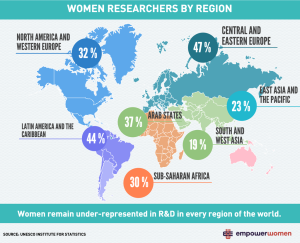The future of mankind is far from secure. I am among many who believe that humanity is in crisis; in particular, our personal health, the security of our food supply and the health of our environment all face potentially catastrophic challenges. Our health faces many unresolved dangers in the areas of cancer, infectious diseases and mental health. Rapid population growth and the many environmental challenges in our agricultural systems raise questions about how we will feed the world in the year 2050. Global warming and climate change are threatening our environments, and pollution is poisoning our land, lakes, rivers and oceans.
While these challenges are monumental and the future may appear bleak, there is hope. Imagine being able to:
- Identify specific genetic mutations of a whole range of cancers and to develop personalized and specific therapies (i.e., cures), even at the patient’s bedside.
- Modify the genetic mutation that predisposes people to suffer from schizophrenia, bipolar disease, severe depression or addictive disorders and to offer effective cures.
- Respond to any viral outbreak (such as Ebola, Zika, AIDS, a nasty flu or COVID-19) with an effective vaccine produced in only days or even hours.
- Grow nutritious, inexpensive, high-protein foods in the widest range of possible conditions of temperature, sunlight, water and fertility . . . or even on Mars.
- Create real meat without killing animals or to produce real milk without milking cows.
- Provide plants with nitrogen from the air instead of having to mine or chemically synthesize expensive nitrogen fertilizers.
- Reverse global warming by removing carbon from the atmosphere and using it as an energy source or material for advanced manufacturing.
- Use microbes to clean up lakes and rivers, removing lead, mercury and other toxic materials and returning our waterways to pristine condition.
- Design specific microbes to clean up toxic-waste dumps, abandoned mines and industrial sites, and even to clean up disastrous oil spills.
A mere six or seven years ago, these imaginings would have been purely the stuff of science fiction. Today, we have realistic expectations that they’ll happen — and that they’ll be brought to market within a decade, maybe even less. These are the products of what some call the “fourth industrial revolution,” a marriage of computer science and newfound knowledge in biology, particularly genomics. This book is about that revolution, a new field of science called synthetic biology and the hope and promise that it offers for the future of mankind.
A note to readers: This book is aimed not at a science audience but, rather, at people who want or need to know how humans are going to overcome some of our major hurdles in health, food and the environment.
Following the main text, I’ve included a glossary and a genetics primer that may help you navigate some of the science that, by necessity, is included in the book.
Chapter Seven
POLLUTED
Throughout the late 19th and early 20th centuries, it seemed as if nature had the capacity to deal with the pressures that humans were beginning to put on it in terms of significant population growth and industrialization. A rather trite and somewhat cynical statement, “The best solution to pollution is dilution,” for a time had some truth to it. Earth seems to have a sort of buffering capacity to deal with some of the insults that we have continued to inflict on it, and for a while, even after the first industrial revolution took hold, all seemed well. But when we started to exceed that buffering capacity, dilution ceased to work and our affronts to the environment begin to accumulate, such that by the end of the 20th century, the effects were not only becoming very evident, they were also starting to have important impacts on our lives. For the most obvious impact, just look at the quality of the air and the quality of the water surrounding us. And if you’re not quite convinced of the gravity of the pollution we’ve created, I would refer you to documentary evidence presented in The Anthropocene: The Human Epoch by Edward Burtynsky. You will have great difficulty coming away from that film without great concern for our future.
While it is obvious that the keys to saving our environment are to stop the continuous assaults on it and to attempt to remediate the damages we’ve already inflicted, we have yet to achieve meaningful results through traditional approaches. Part of this failure can be attributed simply to cost, not only to our pocketbooks but equally to the way we chose to lead our lives. But it’s also possible that too many people simply don’t understand — or don’t care to understand — the implications of our actions. As a society we continue our search for cleaner sources of energy as well as more efficient and cleaner mining and farming techniques. But while that search goes on, we exacerbate the situation with continued growth and industrialization.
It is clear that with population growth and industrialization over the last century, the overproduction and release of carbon dioxide into the atmosphere as a result of the burning of fossil fuels and resulting in global warming is the most serious culprit.
It is, however, by no means unique. Over-farming has resulted in excessive phosphates and nitrates pouring into our lakes and rivers. Contaminated mining sites result in the leakage of highly toxic heavy metals, causing molecules such as mercury, lead and cadmium to leach into surrounding watersheds and water supplies. And, of course, with increased quantities of oil and gas being transported large distances over water and land, serious spills and contamination wreak havoc, contaminating waterways and having a devastating impact on commercial fisheries. Currently, five of the most serious environmental challenges or pressures are:
- fossil fuel consumption and the emission of excessive greenhouse gases
- agriculture’s side effects: deforestation and excessive use of land, water, fertilizers and energy
- industrial pollution of our lakes and rivers by mining, agriculture, factories and urbanization
- population growth and urban sprawl
- garbage disposal
FINAL THOUGHTS
In a very real sense, synthetic biology represents a new “field of dreams” — there seem to be no limits to what we can build. If there is a need, with these technologies, there will be a solution. The building or engineering of these new biological apps is without limit and, really, without precedent. With access to the genomes of millions of different organisms, from humans to the simplest single-cell microbes, and with the DNA codes and massive amounts of biology information accessible on our computers, we can now build or engineer any biological app that we can imagine.
So it’s the year 2024 or maybe 2027 and here are some of the incredible things that we can do as a result of Synthetic Biology. We can be silly and build a carrot with two stalks that tastes like a tomato — no problem. We can increase the protein content of lettuce and grow it in brackish or salt-contaminated water. What a wonderful idea for poor areas of Asia where people suffer from malnourishment and from frequent coastal flooding of their farmlands. We can make rice that incorporates vitamin A to combat childhood blindness in developing countries — no, wait, that’s already been done, and I’ve ranted about it earlier.
We can make vaccines very quickly on demand to immediately stamp out newly emerging infectious diseases. Think of it, we would have nipped the COVID-19 pandemic in the bud and avoided that world-wide shut down that occurred. We would have saved hundreds of thousands of lives to say nothing of the economy. We can correct genetic mutations in the brain cells of patients with schizophrenia . . . well, we can’t quite do that yet, but the potential is at least clear.
We can make microbes that capture carbon dioxide from the atmosphere and reuse the carbon for a whole variety of products. This has the potential to reduce greenhouse gases and not simply stop global warming but actually reverse it. And we can use microbes to clean up mercury in our rivers and lakes.
The possibilities are without limit. If we know the biology and we have access to the genes, stored in our computers, we can build the solutions using synthetic biology and genomics. This is why I’m so optimistic. I believe in science and in young people developing solutions to many of our most critical problems related to our health, food supply and environment. And I’m convinced that the science of synthetic biology will be central in providing many of those solutions. So, today, as we enter this new era of synthetic biology, there is much more than just hope — there is promise.
Excerpted from “Saved by Science: The Hope and Promise of Synthetic Biology” by Mark J. Poznansky. © by Mark J. Poznansky. Published by ECW Press Ltd.





